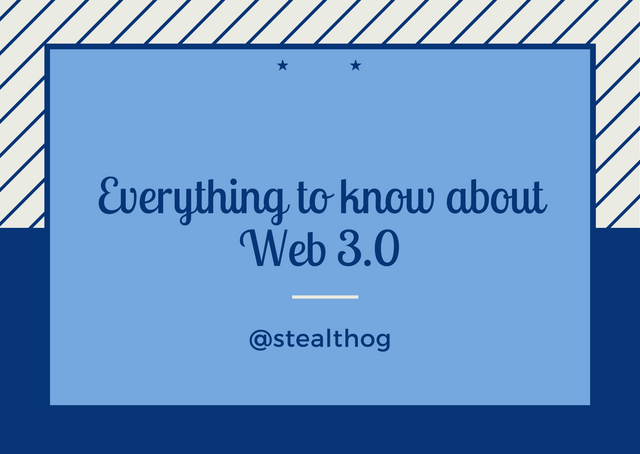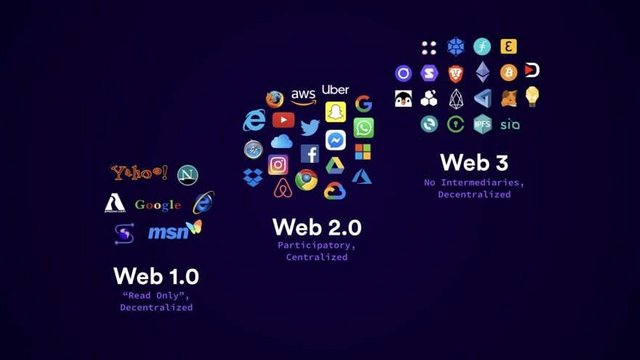Everything To Know About Web 3.0

Suppose you were born some decades ago, especially in developing countries. In that case, you might remember a time when concepts like today's internet and smartphones might seem far-fetched or even impossible. Now the internet has moved past the era of Web 1.0 (the read-only web) and is en route to a more decentralized web version the Web 3.0.
What is Web 3.0?
To understand what Web 3.0 is, we will have to go back to the beginning of the internet to Web 1.0. In the early 1990s to 2000, the internet was a place where people consumed information only, as there were few or zero interactions. The internet pages were single pages where information/ content was passed across; hence it was called the read-only web. Information on sites was the same for everyone as there were no targeted ads. In Web 1.0, the individuals on the internet were pure consumers.
After the early 2000s, Web 2.0 emerged thanks to web technologies like HTML, JavaScript, CSS, etc., allowing for internet innovations like social media. Individuals were able to do more than just read or consume content; they could interact; hence this was called the social web. Internet providers and big tech companies started taking data from individuals and selling them to companies that provided targeted ads.
The Web 2.0 birthed layers of innovations like smart mobile phones where users do not need to connect to the internet only through their desktops but can now access the internet through mobile phones, creating an almost always-connected state to the internet. Another innovation was the social networks that birthed apps and platforms like Facebook, Instagram, Twitter, Uber, Airbnb, etc.; these platforms allow for engagement.
On Web 2.0, every click search done on the internet is taken as data as most sites now have cookies that keep information about our activities. Two individuals will log on to the same web page on the web 2.0 internet and have a separate news feed and ads pop up because they've got different browsing histories. In web 2.0, the individuals on the internet are products.

Then what is Web 3.0? You might be itching to know. Web 3.0 is the third generation web, in its early stage that will use technologies like AI, machine learning, and blockchain to make the internet decentralized more intelligent and make websites and apps more tailored to individual needs on the internet.
Web 3.0 promises to make the individuals on the internet owners of their data, as they have control of their data. This is the new internet powered by blockchain, making the internet decentralized, open, and fair for everybody.
Web 3.0, called the semantic web, will use data semantics in its analysis. In the new web, information and data will be analyzed in a human-like nature to give users a better data-driven experience.
Attributes of Web 3.0
- Artificial Intelligence
Web 3.0 will use innovative technologies like artificial intelligence and machine learning to provide users better internet experience as these technologies can effectively predict results that suit user preference. Web 3.0 will have a human-like understanding of information and data and look out for contextual meaning in data based on the semantic web concept technologies.
- Decentralization
Web 3.0 will be decentralized, meaning that information will be spread across different nodes. There won't be a need for huge databases currently controlled by tech giants like Meta and google. Another characteristic of a decentralized web is that it will be open-source and permissionless, meaning interactions can be done directly without the need for a trusted third party, and participation is open to all and sundry.
- Ubiquity
Though Web 2.0 practice some ubiquity where data uploaded can be accessed anywhere in the world (though with some limitations). Web 3.0 gives users a sense of being or appearing everywhere at once (omnipresent). This is because contents are more connected due to the decentralized nature of web 3.0, where pieces of information are interconnected. This concept of Web 3.0 is similar to the internet of things
Benefits of Web 3.0
Web 3.0 has many benefits, but the chief of all is the ability to have access to content and information without a third party or a centralized body (in this case, big tech). Also, individuals have more control over their data. Web 3.0 will be mainly on blockchains meaning transparency and openness of information.
Another advantage of the new internet will be that users will have a more personified user experience through technologies like AI, semantic web, and machine learning. Web 3.0 offers privacy as much as it provides openness because your online identity is not necessarily tied to your real identity, unlike Web 2.0, which uses our real identity to personalize data.
Drawbacks of Web 3.0
It is a struggle already to control the internet from hate speech down to uncensored materials. In Web 3.0, individuals will have the unrestricted opportunity to upload whatever they deem fit with little or no restriction.
Also, country or state laws on the internet and social media won't be binding as there are no central servers or big tech companies to impose such regulations for them to follow. This is a good and a bad thing, depending on what side of the spectrum you're standing on.
Conclusion
In straightforward terms, Web 3.0 is the new phase of the internet that will ensure the decentralization of content, an open-source permissionless and intelligent internet. Web 3.0 will make specific changes to the present norms like;
Taking away central servers and databases to a more decentralized way of storing and sharing content, creating an internet where AI and machine learning are used to process information through learning algorithms to give users preferred content.